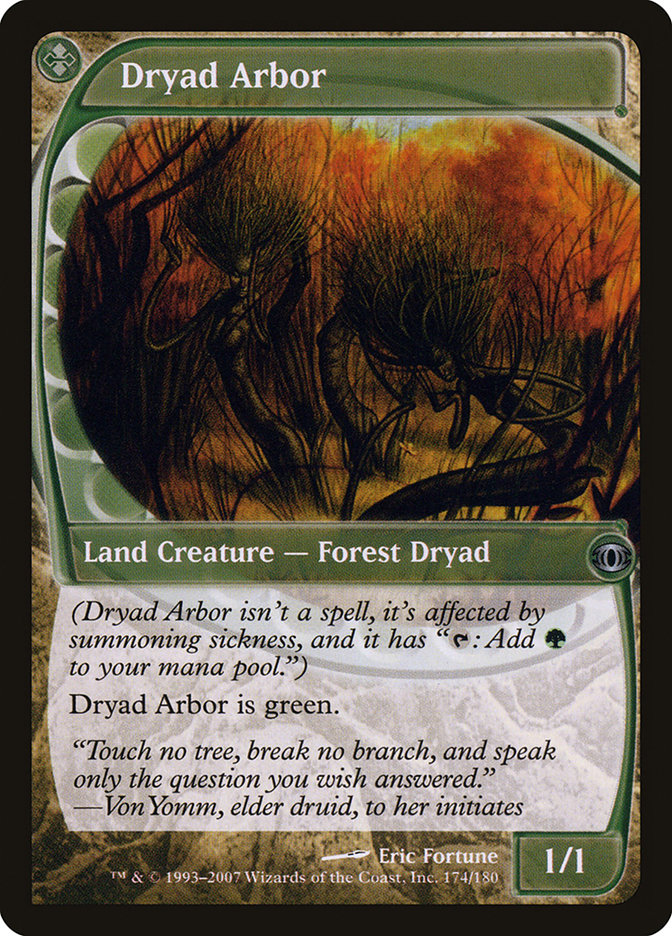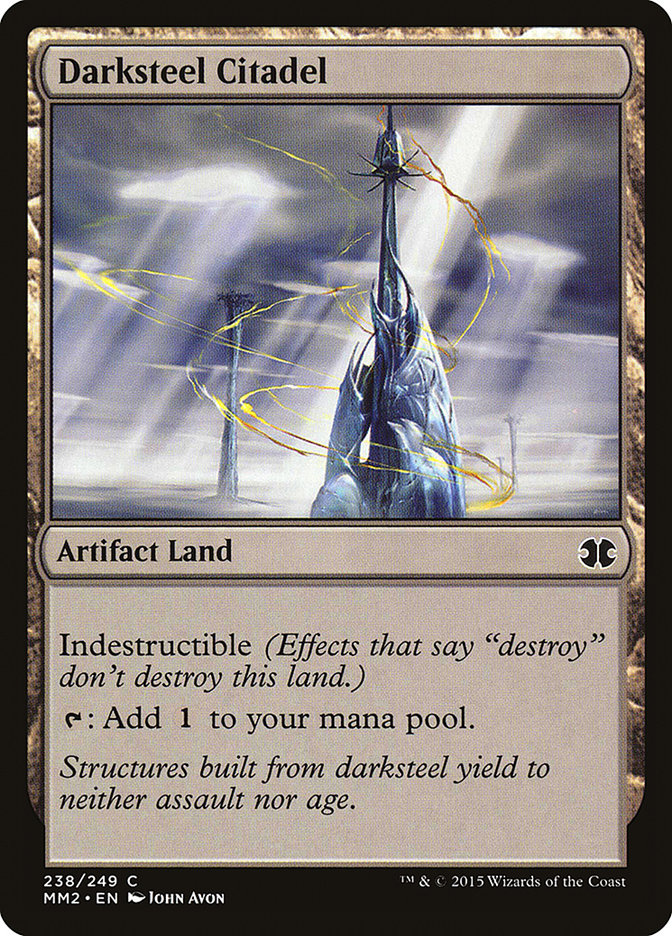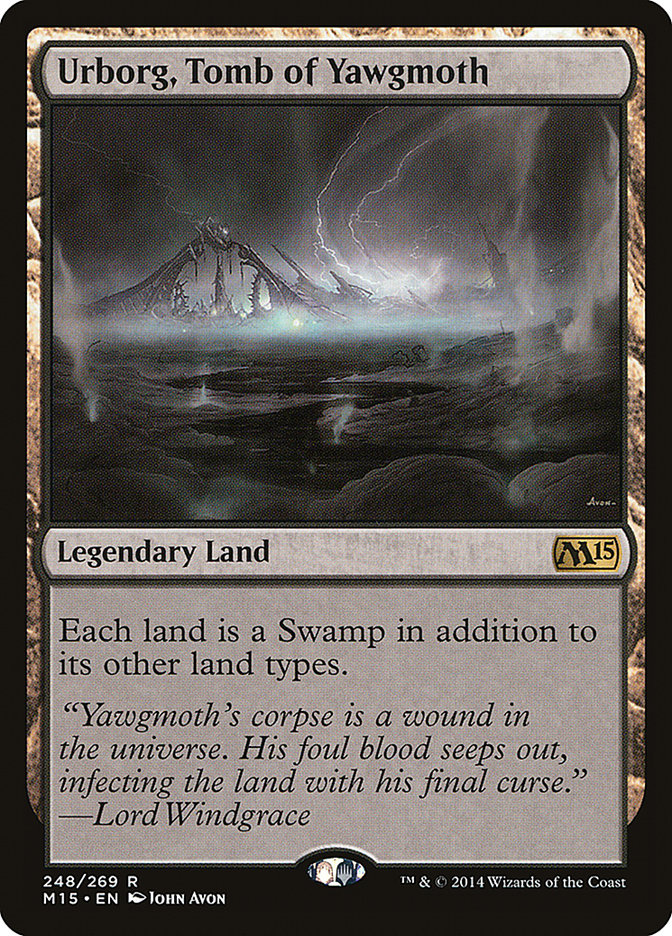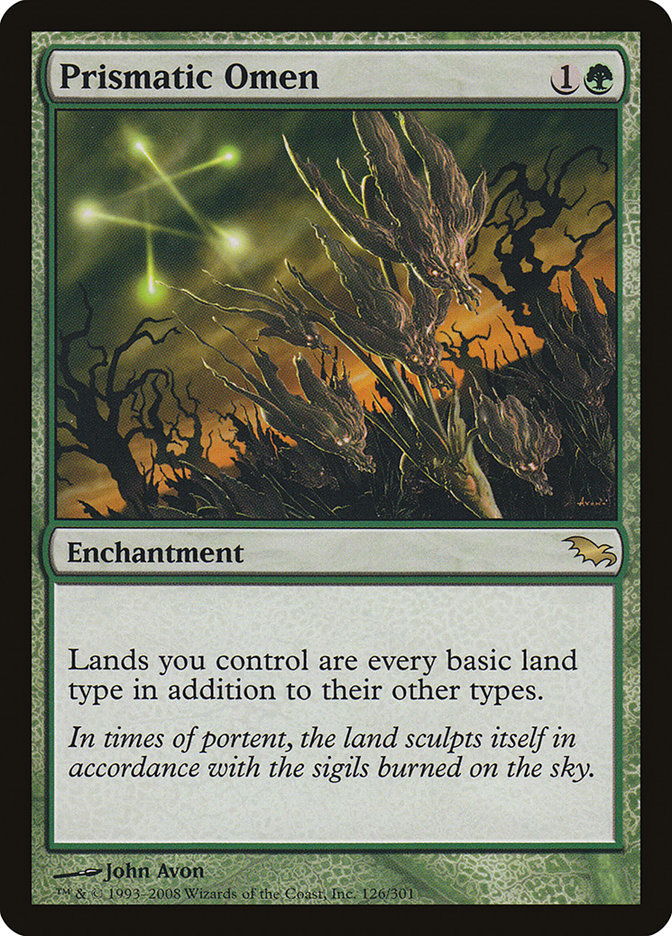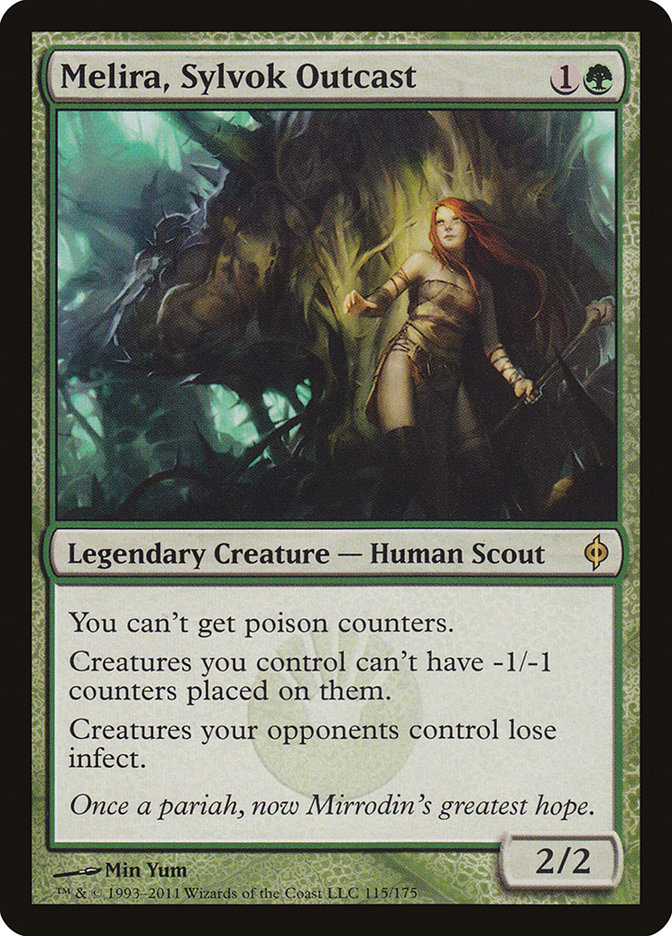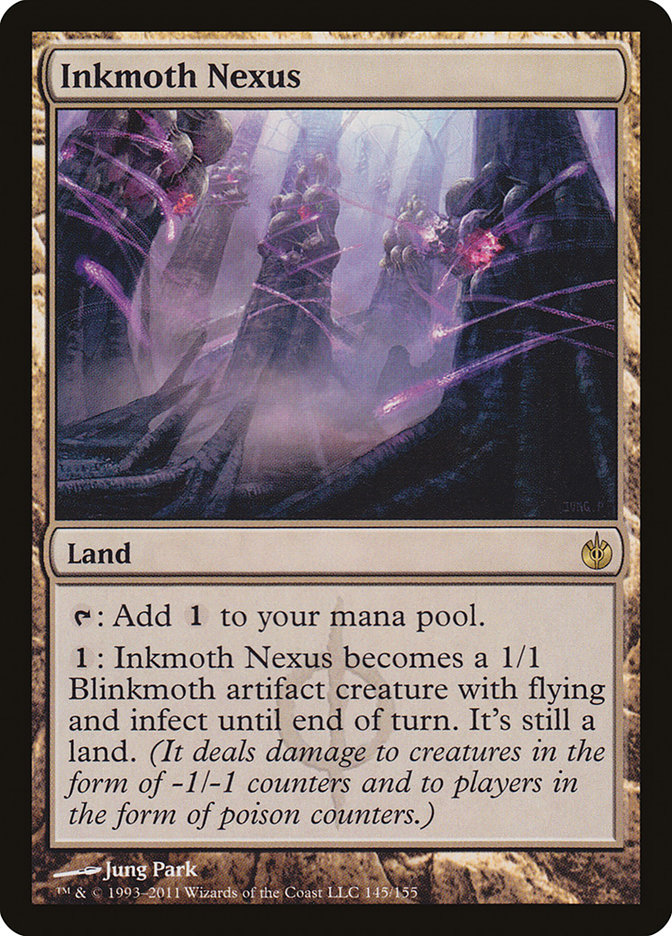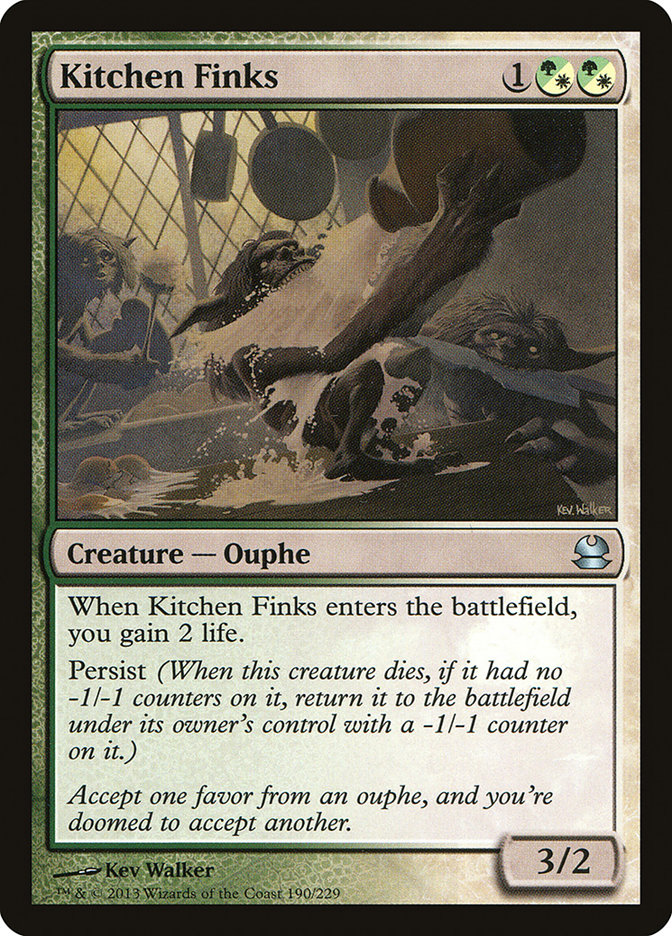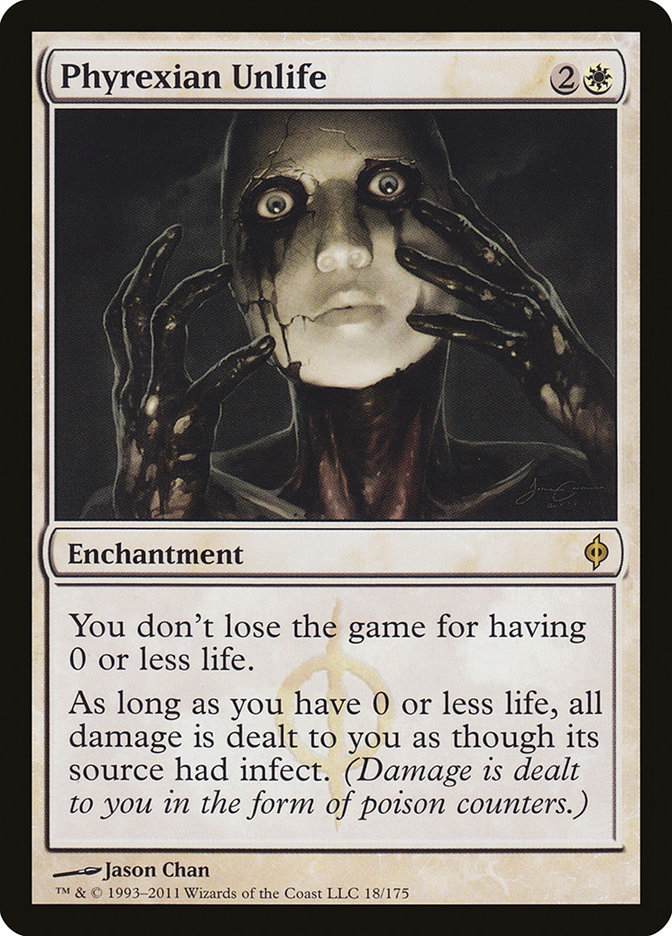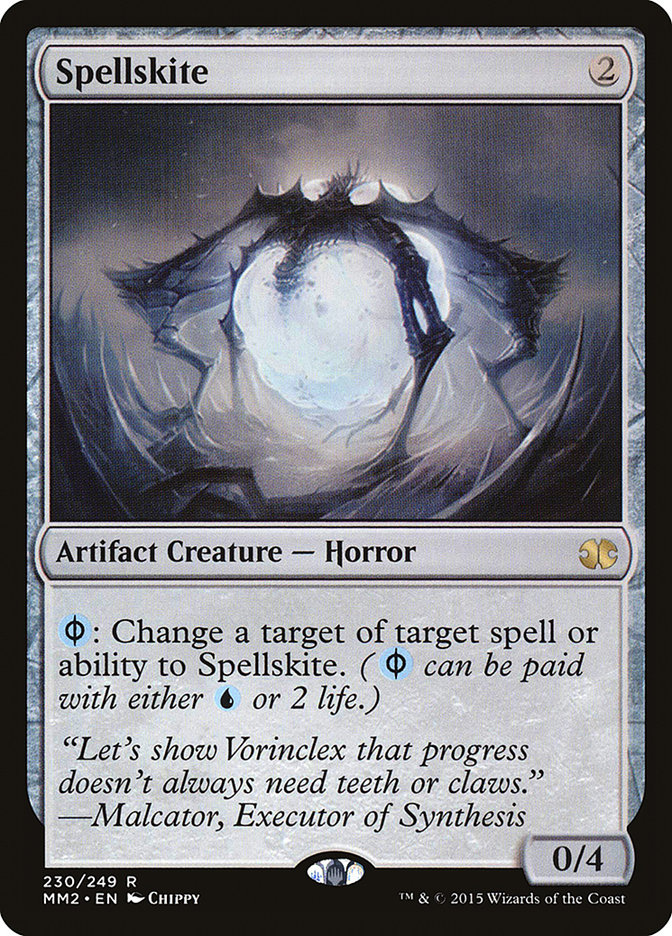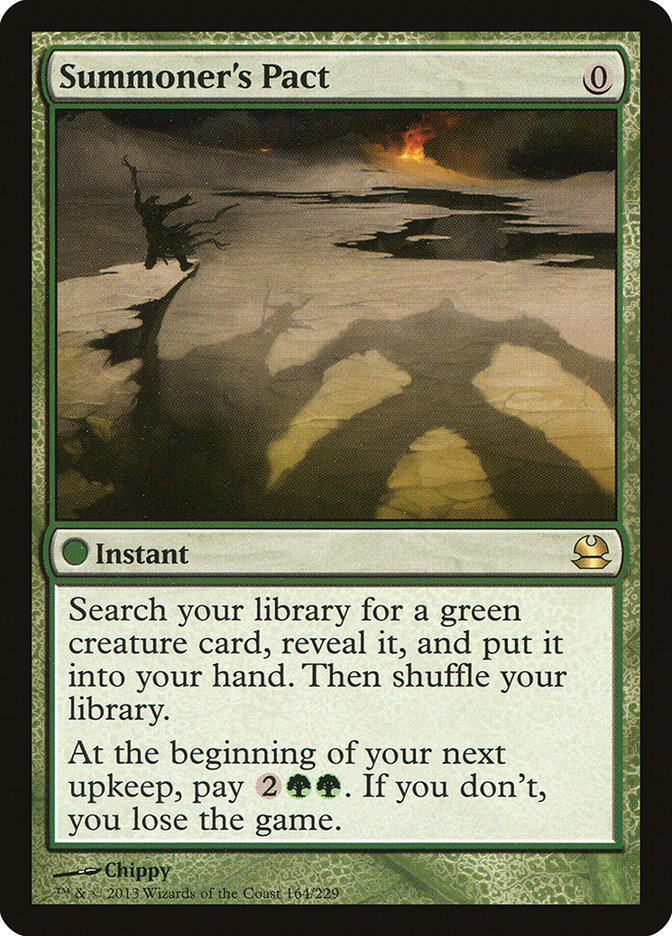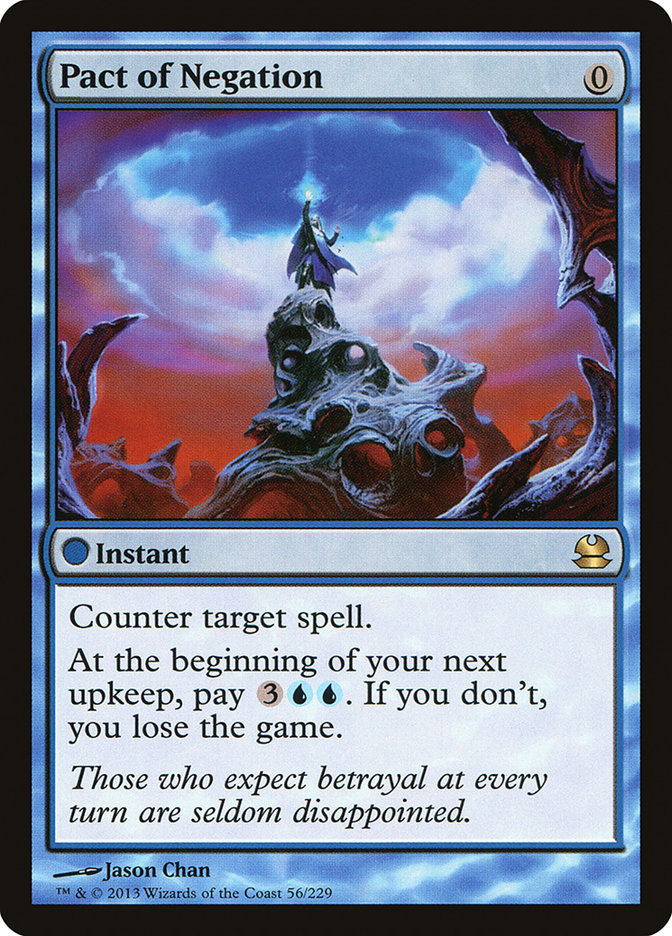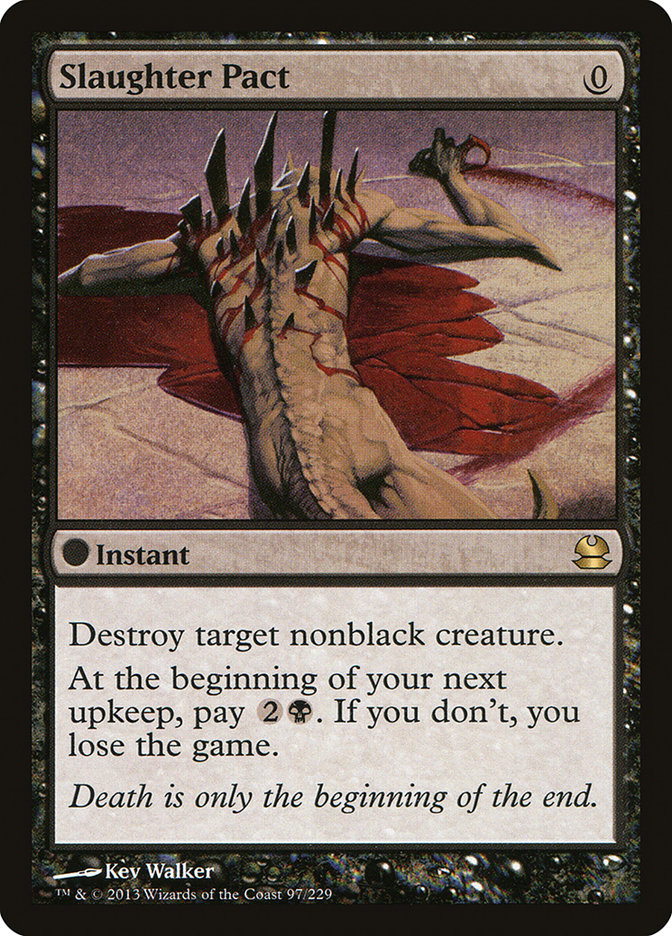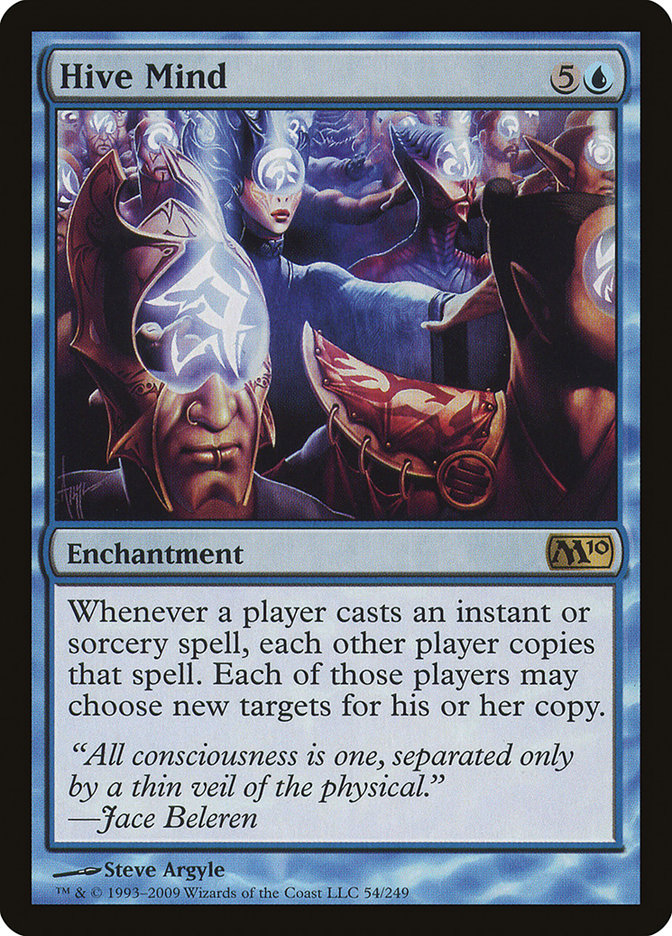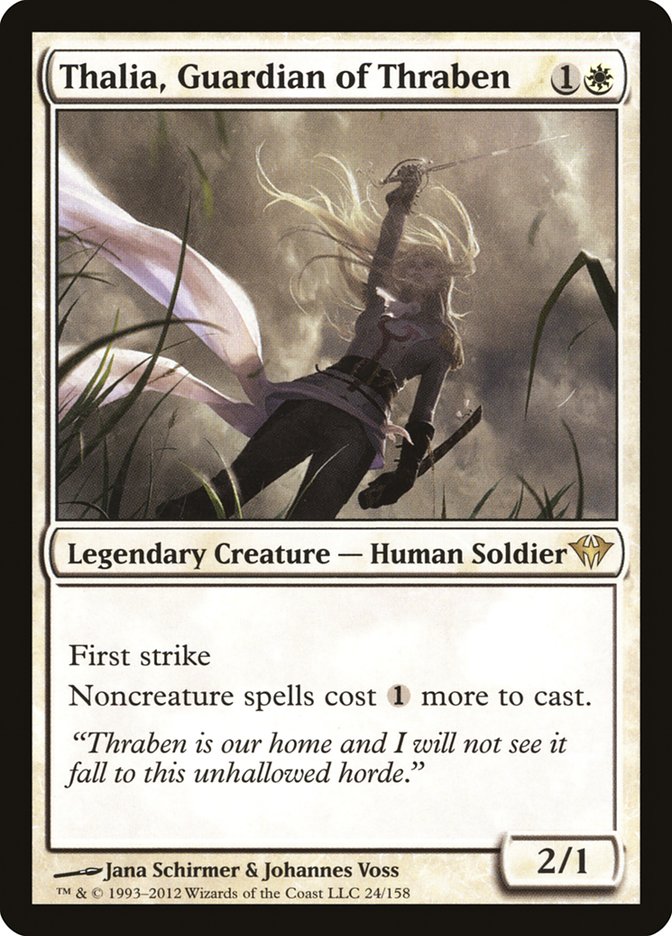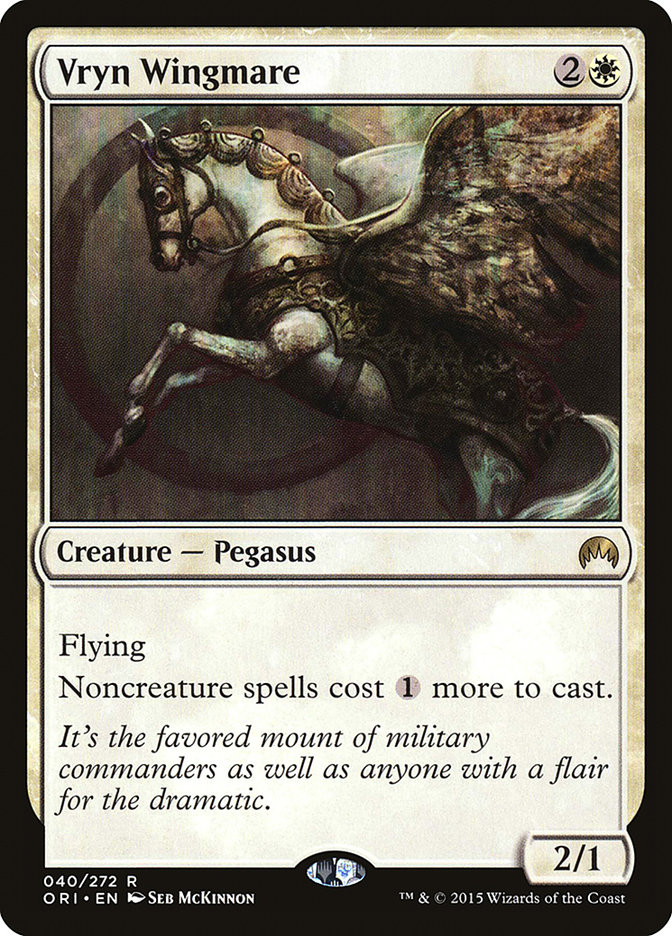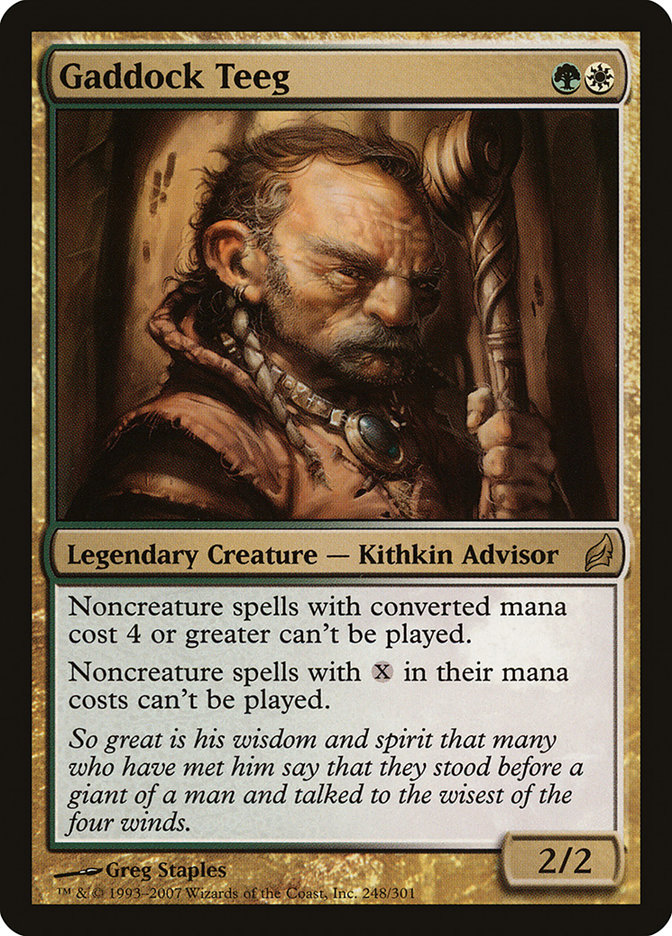It’s not exactly a secret that recent set releases have been lacking in tricky mechanics and card interactions. For better or worse, this has led to Standard being a fairly simple format when it comes to rules interactions, with bestow being the most complex mechanic printed in recent memory. There were a couple of corner cases with devotion, but otherwise nothing major.
Legacy, of course, is the exact opposite, and is further complicated by an inability to trust what is written on the card. It’s been a long time since a Modern-legal card needed to have errata issued (Marath, Will of the Wild was the first card in many years), but it’s rife in Legacy. Just take a look at Animate Dead, The Rack, and Sylvan Library as some examples. While Modern is nowhere near as bad, it does have some fairly common interactions that can catch you unawares. With Modern being an integral part of #SCGINVI this weekend in Las Vegas (come see me and say hi!), what better time to explore some of those interactions to make sure you stay a step ahead of the opposition?
Blood Moon
Let’s start with the card that nobody actually likes. Okay, that might be a small exaggeration; people who have it on the battlefield probably like it. Some of them, anyway.
On the face of it, a card that makes every non-basic land into a Mountain doesn’t seem that bad. Shouldn’t that be a straightforward effect? Well…no. Anything that changes the type of other cards is dealing with layers, and that word alone has been known to strike fear into the hearts of judge candidates everywhere. Heck, it scares some judges too.
For example, look at Dryad Arbor. Blood Moon makes it a Mountain, right? Well, yes. But did you know that the Mountain is still green? Wait, wait, I am not done blowing your mind yet. It’s actually a 1/1 green creature-land – Mountain Dryad that taps for R. Although Blood Moon takes away everything in the text box and changes the land type from Forest to Mountain, it cannot affect the creature-ness or the creature type of the Arbor. Any auras on the Arbor will stick around (unless they have Enchant Forest, of course) and it can still attack or block. I have seen judges get this wrong before, so knowing this is important.
So what about Darksteel Citadel? Again it seems obvious that it becomes a Mountain, and it might even be clear to you that it loses Indestructible. Again, anything in the text box is going to stop working. However, it is still an artifact under Blood Moon. It’s the same principle as with Dryad Arbor above – Blood Moon does not affect the card type, just the subtype of land. Knowing that before your colour-impaired Affinity opponent thanks you for turning on the three Galvanic Blasts in his hand could save your life. You’re welcome!
Getting a little more complicated, how does Blood Moon interact with Urborg, Tomb of Yawgmoth? Well the answer is simple, even if the explanation is not. As this is an article aimed at players and not at people trying to become level 3 judges, let’s just say that regardless of the order in which they are played, Urborg’s effect won’t apply to any non-basic lands once Blood Moon enters the battlefield. The technical explanation is due to dependencies of effects that apply in the same layer, but trust me when I say you don’t really need to know that to play an event.
Contrast that with the interaction with Prismatic Omen. In this case, it’s simply a matter of which one entered the battlefield last. If it’s Omen, all your lands have the five basic land subtypes (but do not gain the basic supertype). If Blood Moon was the latter to the party, everybody is a Mountain. Note that Chromatic Lantern is slightly different in that it gives the land an extra ability, which happens after Blood Moon makes everything a Patrick Sullivan. The Lantern effect will always apply, regardless of order.
Melira, Sylvok Outcast
When this card was printed, I’d be hard-pressed to think anyone pictured it having the impact it has had on Modern. Melira’s unique ability has seen her become a part of several top-tier combo decks, but has also led to some situations that even high-level judges have gotten wrong.
By far the least intuitive and sadly the most common interaction is what happens when you activate an Inkmoth Nexus with Melira on the battlefield. Through several steps and layers of rules obscurity, I’ll tell you that the Nexus does have infect and will deal damage, but the damage will have no effect on the defending player. If the Inkmoth has somehow gained lifelink, the attacking player will still gain life. Yes, this is weird.
The more known interaction is between Melira and creatures with persist, like Kitchen Finks. Essentially Melira stops the -1/-1 counter from the persist ability from ever hitting the creature, so it can keep dying over and over again. You can respond to the trigger while the creature is still in the graveyard, but if you can’t, it will keep coming back until it’s exiled.
Melira also has a weird (and fringe) interaction with Phyrexian Unlife that renders you unable to take damage. It’s also worth noting that any card that requires you to put a -1/-1 counter on it as a cost cannot be activated while Melira is on the battlefield.
Snapcaster Mage
Our friend Tiago has been a format staple for a while, often seen in the company of good ol’ Lightning Bolt. Generally he plays out in a straightforward fashion, but there are some things he just cannot do as well. There are some interactions with Flashback in general that you will want to know.
First and foremost, Flashback is an alternate cost. As such, you cannot cast a spell using another alternate cost when you give it Flashback with Snapcaster. That means you can’t overload a Vandalblast in the graveyard, you can’t awaken a Planar Outburst in the graveyard, and you can’t pitch a blue card to Disrupting Shoal. You can, however, pay additional costs such as kicker, multikicker, and buyback. In the case of the latter though, you are wasting your mana as the card will still go to exile on resolution. This is another case of a rules quirk you really don’t want to know about.
Notably, this is different from how Jace, Telepath Unbound works. He does not give the card in the graveyard Flashback, he just lets you cast it from a strange place. As a result you can pay any alternate costs that might be appropriate.
Spellskite
Oh boy. Who would have thought that a measly 0/4 could cause this much trouble? Well, any time you give a card a unique ability it is likely to cause trouble, and Spellskite is no exception to that rule.
Let’s start with the basic rule of Spellskite’s ability: any spell or ability on the stack is a legal target for the activated ability, even if the redirection won’t work when the ability resolves. This can cause trouble for players asking judges “can I Spellskite that” because technically, you can. It just won’t do anything. Something like Go for the Throat, for example, cannot target Spellskite but can be targeted by Spellskite on the stack. When Skite’s ability resolves it will try to change the target of the spell, realise it cannot, and then do nothing. Nice way to lose two life, right?
The one that comes up the most is Kolaghan’s Command, and specifically how it differs from Electrolyze. For those not familiar with the confusion here, a Kolaghan’s Command that targets Spellskite for the “Destroy target artifact” mode and something else for the “Deal 2 damage to target creature or player” mode can have the damage redirected to Spellskite. On the other hand, an Electrolyze that deals one to Spellskite and one to something else cannot have the second point of damage redirected to Spellskite. The difference here is in the number of times the word “target” is used on the card. Because Kolaghan’s Command says “target” twice, it can be redirected. Electrolyze, Arc Lightning, and other similar effects only use it once.
Spellskite is really good against auras for the most part, but sometimes it’s just not. For example, you can easily redirect a Splinter Twin to your Spellskite. It’s not going to help you that much, but it sure beats losing the game. However, something like a Daybreak Coronet cannot be redirected to Spellskite unless it already has an aura on it because it is not a legal target.
Spellskite is often seen in and against Twin decks, and it has a lot of interactions with various cards in the deck. You can redirect the Pestermite trigger, but not Deceiver Exarch’s trigger if the untap mode is chosen. Kiki-Jiki only targets a creature you control, so his ability cannot be redirected to an opposing Spellskite. Many removal spells can be redirected to Spellskite, but the ones that target a blue (or white) creature like Combust and Rending Volley won’t be able to target the Skite.
Tarmogoyf
How difficult can Goyf be? He’s just a big dumb idiot who beats down, right? Well, it turns out that variable power and toughness is a real pain to track. In fact, unlike most of the things in this article, getting it wrong can get you a warning.
Most people know this by now, but it’s worth repeating. If there is no instant in a graveyard, trying to Lightning Bolt a 2/3 Tarmogoyf will not work the way you probably want it to work. By the time the Bolt resolves, Goyf has four toughness and three damage marked on it. Nope, not going to be enough. Combat damage works differently; if there is no creature in the graveyard and barring any first strike on either side, three damage will kill a 2/3 Goyf. By the time creatures go to the graveyard as a result of combat, Goyf is among them and won’t survive.
The power and toughness of a Tarmogoyf is not information you are required to advertise at all times. If you are asked how big your Goyf is, you are not required to answer. You can choose to answer, and if you do you cannot lie, but you don’t have to be complete in your answer. “There’s a land and a sorcery in my graveyard” is a legal answer even if there are other card types in there as well. However, unintentionally getting the power and toughness wrong, whether during combat or in answer to an opponent, will lead to a penalty. That applies even if you are using one of those nifty “Tarmodice” that are all the rage right now. If this happens in your match, call a judge as there may be a need to back the game up. Lying about it intentionally of course is cheating. Don’t do that. It’s naughty.
The Pacts
You wouldn’t expect these spells, which seem relatively straightforward, to cause many judge calls. Perhaps it’s the fatal trigger that makes so many people nervous when one is on the stack, but at the last couple of Modern Grand Prix I’ve worked I have had a lot of questions about them.
If your opponent has a Pact trigger to deal with and has drawn their card for the turn, call a judge right away. You’re almost certainly winning that game, but there could also be a penalty for your opponent for missing their trigger. Tracking those warnings is important, so don’t just assume that winning the game is enough.
If a Pact is countered for whatever reason, the “you lose the game” trigger will not happen. The setting up of that delayed trigger is part of the resolution of the Pact itself, so if it never resolves then there won’t be any reason to pay in the upkeep.
This is as good a place as any to mention the interaction with Hive Mind, especially when it comes to Pact of Negation. With a Hive Mind on the battlefield, your opponent casts a Pact. If you try to counter your copy of the Pact, they get a copy of your counter and will just counter yours. You can destroy the Hive Mind in response, but at that point the trigger is already on the stack. You should probably just proceed to the scoop phase.
Thalia, Guardian of Thraben / Vryn Wingmare
Thanks to Craig Wescoe (naturally) reminding people that Hate Bears was a real deck in Modern, both Thalia and her newer steed could see some play this coming weekend. Nobody likes paying taxes, but there’s more to keep in mind than the extra cost.
Let’s take a spell like Painful Truths. Normally you can’t draw more than three cards with it, but the extra cost can be paid with an extra colour, allowing you to go to four. The same applies to Radiant Flames and Pentad Prism, although the former sees no play right now in Modern.
Note though that the extra cost to cast the spell does not change the converted mana cost of
that spell. You won’t be able to Spell Snare a Dispel even if, in this case, it did cost two mana. It also won’t prevent three-mana spells from being cast with Gaddock Teeg on the battlefield, but we’ll get to him later.
Although there aren’t many delve spells left in the format, it’s worth noting that you can pay the extra one mana by delving an extra card. You can also pay it by convoking an extra creature, should that be a thing your deck does. This would also apply if you were casting Tasigur or Gurmag Angler under a Lodestone Golem, however likely that is.
Gaddock Teeg
Mr. Teeg pities the fool who tries to cast X spells or big spells, but that pity doesn’t cover a lot of situations that some players think it might.
Lightning Axe, for example. Even if the player casting it doesn’t discard a card and pays the extra five mana (yes I know it has never happened in recorded history), the CMC is still one and Teeg can’t stop it. Well, he could stop it with his face I guess. And probably will. Buyback, overload, and kicker all follow the same rules.
On the other hand, Flashback costs are not converted mana cost. A card like Bump in the Night or Forbidden Alchemy can always be cast with Gaddock Teeg on the battlefield, even though the Flashback cost is greater than four. Similarly, you cannot cast a delve spell with CMC four or greater under a Teeg.
Simply put, the CMC is always whatever is printed in the top right of the card.
Some quick hits to finish off:
– Goblin Guide triggers are the responsibility of the controller. If your opponent does not remind you to reveal, call a judge.
– Dark Confidant triggers are not detrimental. That means missing one won’t result in a warning, but missing it on purpose is still a Very Bad Thing.
– Skullcrack stops protection effects from preventing damage. If a Kor Firewalker is blocking a red creature, Skullcrack will stop the protection ability from keeping the Firewalker alive.
– Phyrexian Unlife only gives poison counters once you are below zero. The damage that takes you from above zero to below zero won’t give you counters. This makes first strike damage very effective.
– Stony Silence and Phyrexian Revoker both stop mana abilities. This makes Darksteel Citadel, Elvish Archdruid, and the Signets very sad.
Hopefully these tips keep you ahead of the game this weekend in Las Vegas. I will be there, battling until they tell me to stop, so please come say hi. I’ll be the big black dude with the blonde hair.
As always, thanks for stopping by and until next time…Brew On!



